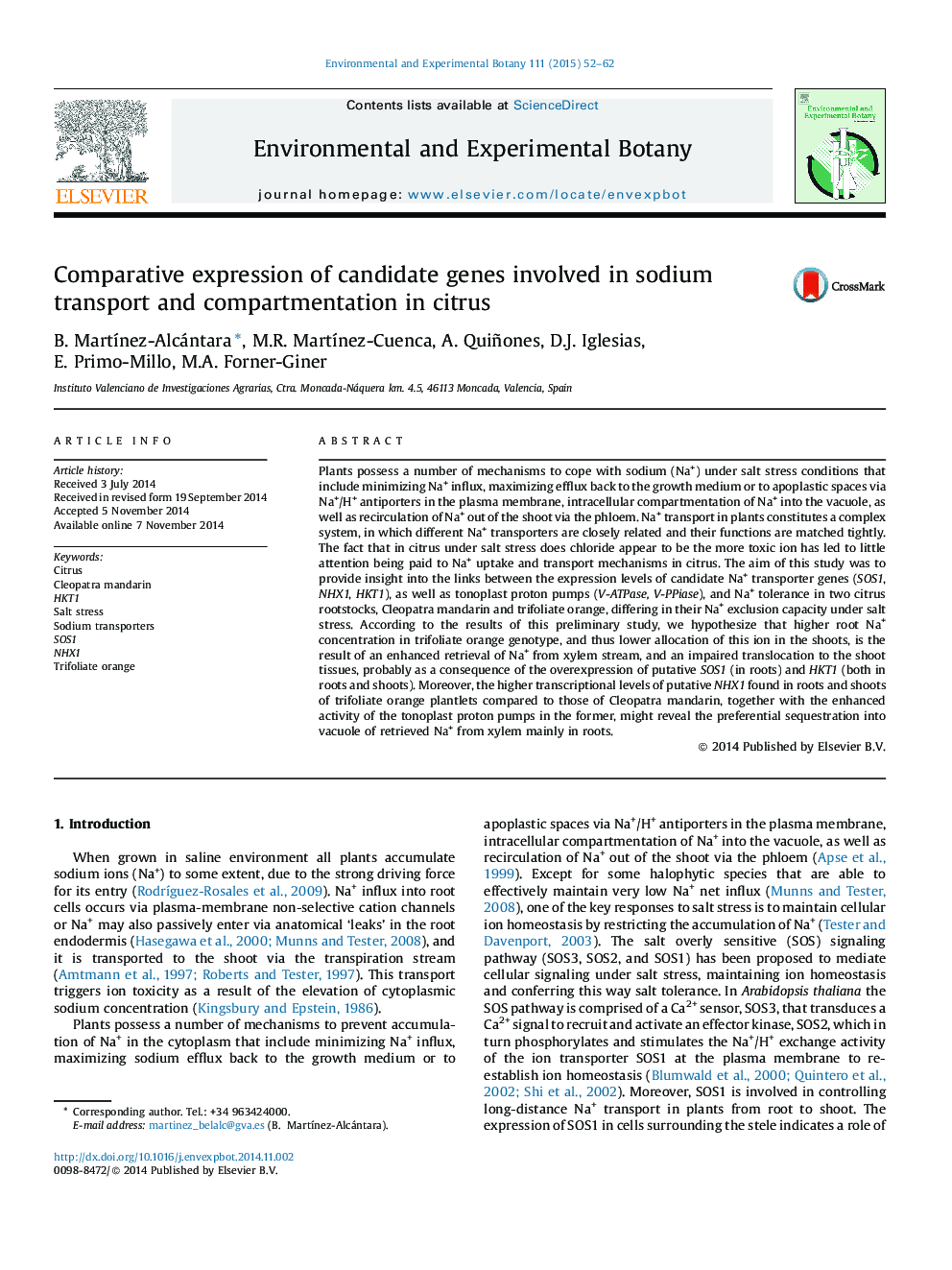| کد مقاله | کد نشریه | سال انتشار | مقاله انگلیسی | نسخه تمام متن |
|---|---|---|---|---|
| 6388842 | 1628066 | 2015 | 11 صفحه PDF | دانلود رایگان |
- Citrus rootstocks exhibit differences in sodium exclusion.
- Expression levels of candidate Na+ transporter genes is compared in two rootstocks.
- Candidate SOS1, HKT1 and NHX1 genes overexpressed in the excluder genotype.
- Na+ is retrieved from xylem and sequestrated in root vacuoles of excluder genotype.
Plants possess a number of mechanisms to cope with sodium (Na+) under salt stress conditions that include minimizing Na+ influx, maximizing efflux back to the growth medium or to apoplastic spaces via Na+/H+ antiporters in the plasma membrane, intracellular compartmentation of Na+ into the vacuole, as well as recirculation of Na+ out of the shoot via the phloem. Na+ transport in plants constitutes a complex system, in which different Na+ transporters are closely related and their functions are matched tightly. The fact that in citrus under salt stress does chloride appear to be the more toxic ion has led to little attention being paid to Na+ uptake and transport mechanisms in citrus. The aim of this study was to provide insight into the links between the expression levels of candidate Na+ transporter genes (SOS1, NHX1, HKT1), as well as tonoplast proton pumps (V-ATPase, V-PPiase), and Na+ tolerance in two citrus rootstocks, Cleopatra mandarin and trifoliate orange, differing in their Na+ exclusion capacity under salt stress. According to the results of this preliminary study, we hypothesize that higher root Na+ concentration in trifoliate orange genotype, and thus lower allocation of this ion in the shoots, is the result of an enhanced retrieval of Na+ from xylem stream, and an impaired translocation to the shoot tissues, probably as a consequence of the overexpression of putative SOS1 (in roots) and HKT1 (both in roots and shoots). Moreover, the higher transcriptional levels of putative NHX1 found in roots and shoots of trifoliate orange plantlets compared to those of Cleopatra mandarin, together with the enhanced activity of the tonoplast proton pumps in the former, might reveal the preferential sequestration into vacuole of retrieved Na+ from xylem mainly in roots.
Journal: Environmental and Experimental Botany - Volume 111, March 2015, Pages 52-62
